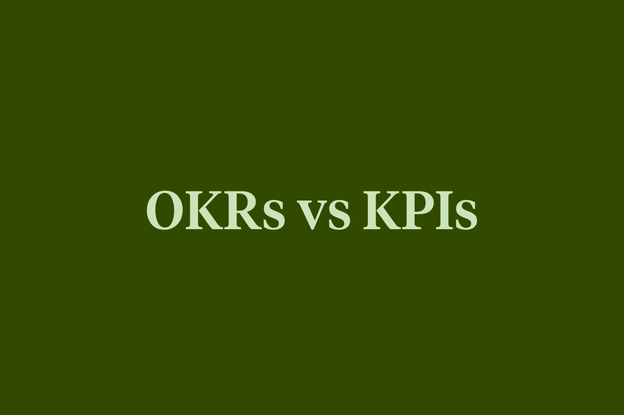How to adapt goals in a time of crisis

An effective performance management process should create a shared understanding of what needs to be achieved at an organizational level. It should also make clear what individuals or teams have to do, learn, and develop to be successful within that context. Unfortunately, more often than not, this isn’t the case when it comes to performance management.
One of the crucial aspects of the performance management process is setting goals. Goal setting helps employees understand what’s expected of them. It benefits them by improving their motivation, satisfaction, and determination. Goal setting also adds value to an organization by improving productivity and performance. This is an essential practice now, as employees and employers try to find clarity during the COVID-19 pandemic.
The importance of goals during a crisis
It’s likely that, amid a crisis, company leaders are managing competing priorities, which can make it easy to put an indefinite hold on the performance process. However, a shared vision and goals to help meet that vision, are more important than ever. Here’s why:
- It can lead to better long-term decisions. Research focusing on how executives handle crises has shown that those who handle crises well take a broader outlook and longer-term view. This demonstrates that they trust their teams to make decisions and ensure that people know what is expected of them and what they can expect from others. Goal setting is also a critical component of the evaluation and development process, meaning that we should adjust as necessary to maintain some sort of performance process. While COVID-19 will pass, it’s unclear exactly when it’ll happen. Maintaining key aspects of the evaluation process will serve us when decisions around promotions and compensation adjustments inevitably need to be made.
- It can reduce the strain of remote work. In addition to changing priorities, your organization will likely deal with major shifts in how you operate (e.g., moving to an entirely remote workforce). Virtual teams are more likely to encounter challenges with communication and coordination and are more susceptible to a lack of team cohesion and trust. Focusing on what you can accomplish together, rather than what can be accomplished individually, is one way to mitigate the strain of working remotely. Not to mention that goal setting has improved persistence in the face of obstacles.
- It can provide clarity. By clearly articulating goals and uniting our teams in their efforts, employers can infuse individuals with a sense of clarity when they might be experiencing increased ambiguity. Goal setting creates a sense of alignment and shared understanding about what they should be doing to learn, develop, and be successful moving forward.
Considerations when adjusting goals
Given the impact your organization has felt in response to COVID-19, you’ll likely have to adjust previously set goals. You’ll also want to consider the nuances of different parts of your business. For instance, goals in one region or department might be more heavily impacted than another. Here’s how we recommend adjusting goals across various levels of your company:
At the organizational level
In a time of crisis, an organization needs to provide its employees with a clearly defined mission and purpose to keep them motivated and aligned. When it comes to adjusting organizational goals, it’s important to ask the following questions:
- What makes sense for the company to pursue right now? Is it obtainable?
- What goals might be unachievable or not help the company succeed during this time?
- What are the short-term and long-term impacts of these goals?
The purpose of this exercise is to discern what the organization’s priorities are and what the implications of achieving those goals might look like today and a few months down the line. For instance, a huge product launch that felt urgent before COVID-19 may not be relevant today. Instead, your goals may shift to focus more on retaining revenue and employees - which may provide a more lasting, positive impact than the product launch. As the goals and strategy evolve, it’s important to constantly communicate these changes with your employees so they can start thinking about how it may impact their own goals.
At the team or department level
Once the organizational goals are updated, teams and departments will need to adjust their goals so they’re aligned with the company. We recommend creating a focus group that includes key stakeholders from your team for an ideation session. Ensure that this is a safe environment to freely share and iterate on ideas. If team goals are no longer aligned with organizational goals, document why they’re critical to accomplish. At the end of the session, three to five team or department goals should be assigned to an owner.
Consider discussing some of the following questions:
- How can our team have the most impact on the organization’s updated goals?
- Looking at our previous goals, what critical goals should be carried forward? What should we abandon? What can we adjust?
At the individual level
Consider the same process we outlined above for team goals when adjusting individual performance goals, with the only difference being that the manager plays a role of a coach. Remember: when employees have a voice in setting their own goals and aligning them to company initiatives, they tend to set higher goals and have higher performance than if their goals were to be assigned by their manager. Participative development of goals not only results in greater clarity around expectations but also produces more effective strategies for how to achieve them.
Managers should plan to meet with direct reports to review updated team goals and ideate on each team member’s individual goals. Individuals should also seek feedback from their teammates on updated individual goals. Consider using the following questions to guide conversations with employees:
- How can your individual goal align with team goals?
- How can we set inspiring goals?
- How can your updated goals still align with personal development opportunities?
Now, more than ever, we can see the importance of adaptability and agility in the workplace. While challenging, we can use the current crisis as an opportunity to create a framework or process for adjusting goals in times of uncertainty and disruption.







